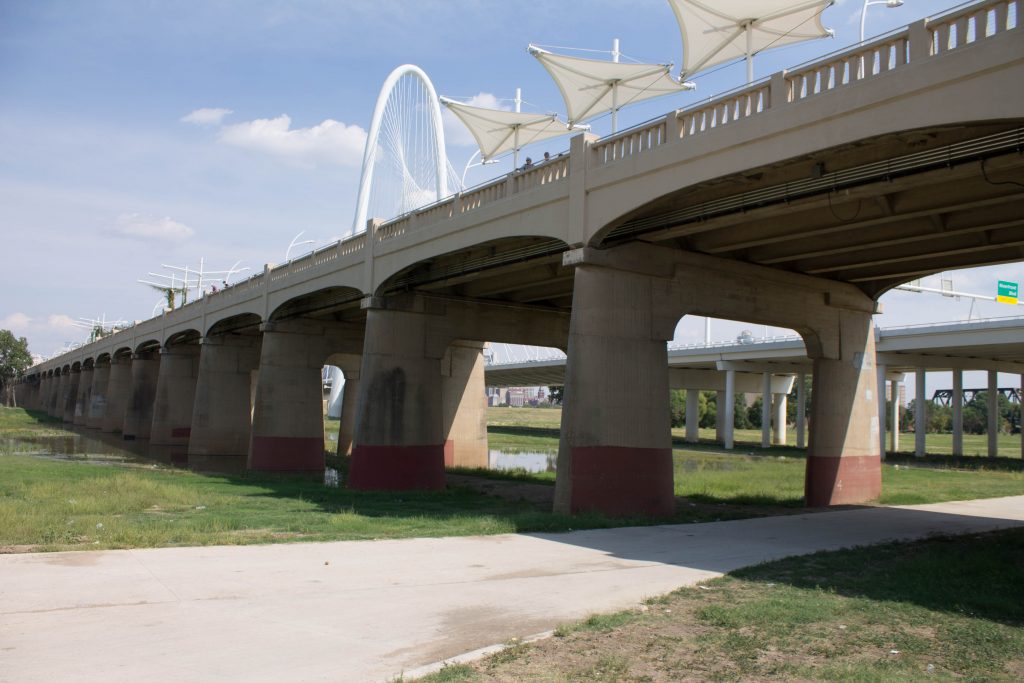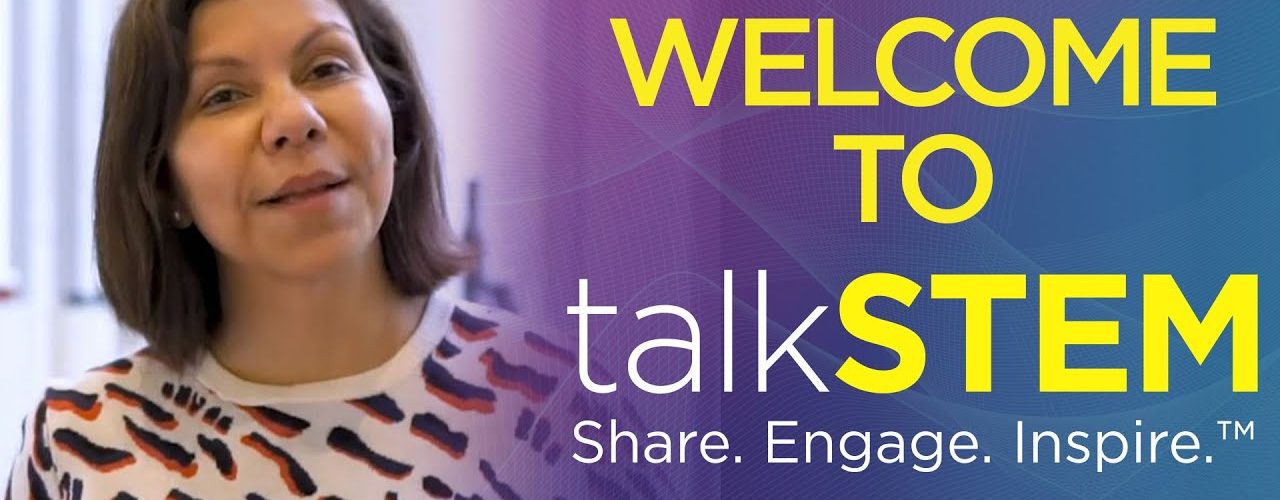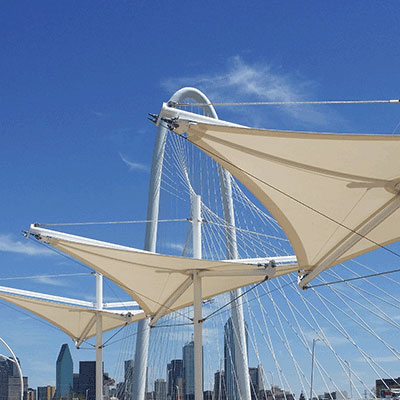We are celebrating the 50th anniversary of the first Earth Day celebration! talkSTEM created a 2-part blog post to share ways to get your young scientists to participate in Earth Day 2020! You can read the first part here. In this second part, we are excited to launch our latest walkSTEM experience that highlights a natural treasure in Dallas, TX, the Trinity River.
Presenting: walkSTEM@Ronald Kirk Bridge


talkSTEM is happy to present a brand new walkSTEM experience, walkSTEM@Ronald Kirk Bridge. This bridge, formerly known as the Continental Avenue Bridge, was renamed in 2016 after the first African-American mayor in Dallas, TX. This walkSTEM site is located in West Dallas and serves as a community gathering place between West Dallas and downtown. We were excited to start this project in collaboration with Professor Candace Walkington from SMU Annette Caldwell Simmons School of Education & Human Development and are thankful for her and her students’ support.
The Ronald Kirk Bridge proved to be rich with STEM content and an entertaining atmosphere and the talkSTEM team thoroughly enjoyed designing this experience that you can enjoy both virtual through our videos as well as when you are able to visit this site. The bridge houses a children’s playground, a maze, seating areas, native flower beds, a concert area and more! This park bridge can be accessed by 2 DART bus routes, and sits in parallel with the Margaret Hunt Hill bridge and the 1930 Texas and Pacific Railway Trinity River Bridge. To learn more about the Ronald Kirk Bridge, click here.


To begin our research for this walkSTEM experience, we first had to observe the different components of the bridge, and see what questions came up. Because the bridge had so much potential content, the research phase took multiple trips to the Ronald Kirk Bridge. Located below the Ronald Kirk and Margaret Hunt Hill Bridge is the Trinity River. This particular walkSTEM project took place at one small portion of the river, and we look forward to exploring the rest of the Trinity River soon. There are many outdoor activities that the Trinity River offers, including biking, hiking and birding trails, paddling, picnic areas, playgrounds and horseback riding trails.
We quickly realized this site over the Trinity River provided a unique opportunity to discuss environment and sustainability work, and how they connect with engineering and design. The walkSTEM tour at Ronald Kirk Bridge contains 4 videos that cover a range of topics, suited for 5th-12th grade students.
As part of a walkSTEM experience, we hope that you will use these videos to explore your world through a new lens, and learn to recognize the STEM elements around you.
In this playlist, you can explore:
1. Which Mass Travels Faster?
In this video, the talkSTEM team performs an experiment to determine which mass travels faster in the Trinity River. This experiment uses 2 pieces of driftwood that were already found in the Trinity River – a thinner and thicker stick. The talkSTEM team utilized the lines in the sidewalk parallel to the river to measure the distance traveled by the sticks down the river. One person was at one end of the marked distance, dropping the sticks down one at a time in the flowing river. The second person stood at the opposite end of the marked distance and they use a stop watch to measure the time it took for each stick to travel to their end point from the starting point. The video prompts you to pause the video and make your hypothesis – which stick will travel faster in the Trinity River? The results of the experiment conclude that the thinner stick traveled much faster than the thicker stick.
Why is this? To explore the answer to this question, we did research on buoyancy and drag forces that take place in moving medium (aka the river water). Depending on how much buoyancy the object has, this determines the amount of surface area that is submerged in the river. If the object has more surface area in contact with the water, the object has MORE drag force acting on the object from the river. Therefore, we can see how the thinner stick traveled faster. The thinner stick had more buoyancy, which created far less surface area under water than for the thicker stick. This resulted in less drag acting on the thinner stick, so it was able to move faster than the thicker stick. To learn more about these forces, click here What other strategies could you use to estimate the speed of an object? What if the object were traveling in the air instead of water?
2.What is the Weight of the Ice Rink?
This video was filmed on a very cold day in North Texas, right after a hard rain. The talkSTEM team wondered what would happen if lots of rain water froze on the Ronald Kirk Bridge- could you potentially ice skate on the bridge? Using found information about the density of ice and the thickness of a typical ice rink, the talkSTEM team estimated how much extra weight the bridge would have to support. This video also shows unconventional ways of measuring distances. Instead of using measuring tape, they used their foot to measure each concrete span, then multiply to find an estimated distance.
3.What is the Speed of the Water?
A natural whirlpool can be seen from the Ronald Kirk Bridge below in the Trinity River. The talkSTEM team wondered what the speed of the whirlpool was. In this video, you will learn about a strategy for estimating the speed of a circular motion. How would this speed compare to the speed of the river normally or without the whirlpool? What other strategies could you use to measure the speed of the water? How is this important information to know when considering litter in the Trinity River?
4. What is a Dodecahedron?
At the Ronald Kirk Bridge, there is a great playground with lots of climbing structures. This video explores the interesting shapes that repeat on the playground. Why was this shape used in the playground design? Why not a cube or sphere? We found out that the repeated shape is called a dodecahedron. This special 3D shape is one of 5 platonic solids. A platonic solid is a “convex polyhedron constructed by congruent, regular, polygonal faces with the same number of faces meeting at each vertex.” A dodecahedron is unique because it is constructed of 12 pentagons. This is the most number of sides (5 sides of a pentagon) you can have on the repeating polygon that will create a 3D structure.
Therefore, this unique 3D shape allows the structures to be stacked on one another, while leaving 11 extra sides for kids to climb on. If you were to design your own playground, what shape might you use and why?
The walkSTEM@Ronald Kirk Bridge tour can be used to visit the park virtually, and to supplement a physical visit. For example, you can watch some videos before going with your family and see if you can spot the places we filmed on the bridge, and see what other questions you think of. You can also watch the videos from a smart phone while you are at the Ronald Kirk Bridge.
Time to Explore
We encourage you to use Earth Day as a way to get to know the wonderful park systems you have access to, along with the Trinity River. Take this moment to research and explore what the Trinity River has to offer, and the many parks beyond Ronald Kirk Bridge that are waiting for you. You can learn more about the Trinity River by visiting the Trinity Park Conservancy website.
To enhance your Earth Day celebrations this month, check out #TrinityRiverConnectsUs to find activities, challenges and resources. We hope you enjoy exploring the many natural sites available in Dallas, TX and learning about the science, technology, engineering, art and math that can be found everywhere. You can also visit the USGS site to explore the characteristics and health of the Trinity River as well as any othe driver in the US.
Share your Earth Day explorations with us! We’d love to see how you and your family are making the best out of this situation to learn about the natural world around you.
Facebook: @talkstem
Twitter: @talkingstem
Instagram: @talkingstem









Add comment